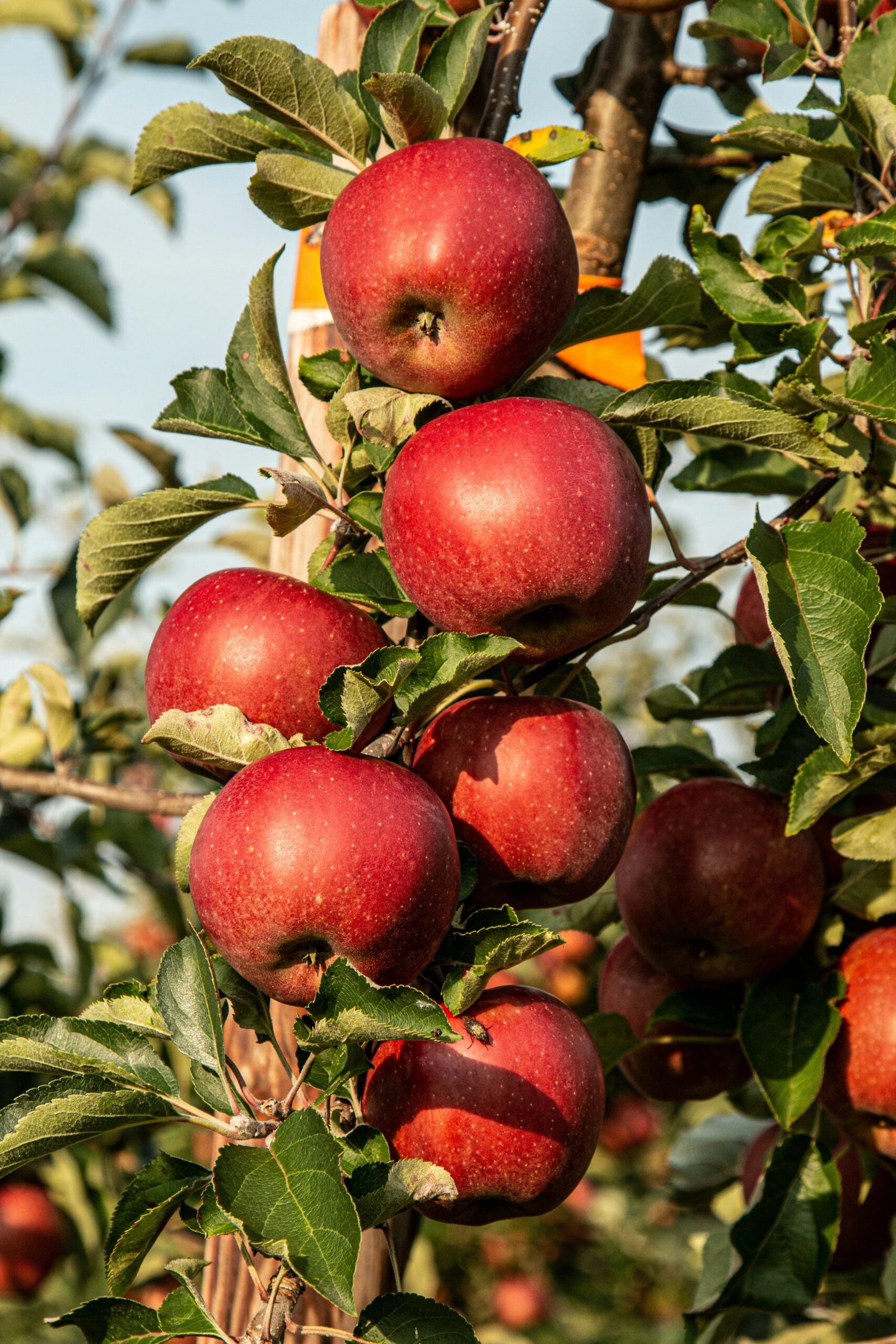
How to Make Biscuits Without Milk or Baking Powder
Are you craving biscuits but don’t have milk or baking powder? Don’t worry, you can still enjoy delicious homemade biscuits using alternative ingredients. In this article, we will explore different methods to make biscuits without milk or baking powder. Whether you have dietary restrictions or simply ran out of these ingredients, these recipes will come to your rescue!
1. Yogurt or Sour Cream: One simple substitute for milk is yogurt or sour cream. These dairy products add moisture and richness to the biscuits. To make biscuits using yogurt or sour cream, start by combining all-purpose flour, baking soda, salt, and any desired herbs or spices in a mixing bowl. Then, add the yogurt or sour cream gradually, mixing until a soft dough forms. Roll out the dough and cut it into biscuit shapes. Bake in a preheated oven until golden brown.
2. Buttermilk: If you don’t have milk, buttermilk can be an excellent alternative. Buttermilk adds a tangy flavor and helps create a tender texture in biscuits. To make biscuits with buttermilk, combine all-purpose flour, baking soda, salt, and any desired seasonings in a mixing bowl. Cut in cold butter until the mixture resembles coarse crumbs. Then, gradually add buttermilk, stirring until a soft dough forms. Roll out the dough and cut into biscuits. Bake until golden brown.
3. Water and Oil: Another option for making biscuits without milk is to use water and oil. This method is suitable for those who are lactose intolerant or following a vegan diet. To make biscuits with water and oil, combine all-purpose flour, baking powder, salt, and any desired flavorings in a mixing bowl. Add oil and water gradually, mixing until a soft dough forms. Roll out the dough and cut into biscuits. Bake until lightly golden.
4. Almond Milk or Soy Milk: If you have dairy alternatives like almond milk or soy milk, you can use them as a substitute for regular milk in biscuit recipes. These plant-based milks add moisture and a subtle nutty flavor to the biscuits. To make biscuits with almond milk or soy milk, combine all-purpose flour, baking powder, salt, and any desired herbs or spices in a mixing bowl. Cut in cold butter until the mixture resembles coarse crumbs. Gradually add the almond milk or soy milk, mixing until a soft dough forms. Roll out the dough and cut into biscuits. Bake until golden brown.
5. Carbonated Water: Surprisingly, carbonated water can also be used as a substitute for milk in biscuit recipes. The carbonation helps create a light and fluffy texture in the biscuits. To make biscuits with carbonated water, combine all-purpose flour, baking powder, salt, and any desired seasonings in a mixing bowl. Cut in cold butter until the mixture resembles coarse crumbs. Gradually add the carbonated water, mixing until a soft dough forms. Roll out the dough and cut into biscuits. Bake until lightly golden.
Now that you know these alternative methods, you can enjoy freshly baked biscuits even if you don’t have milk or baking powder on hand. Experiment with different ingredients and flavors to create your own unique biscuit recipes. Whether you prefer a classic buttermilk biscuit or a dairy-free option, these recipes will satisfy your biscuit cravings!
1. Biscuits with Yogurt
If you don’t have milk, yogurt can be a great substitute. Yogurt adds moisture and tanginess to the biscuits. Here’s how you can make biscuits using yogurt:
- Preheat your oven to 425°F (220°C) and prepare a baking sheet with parchment paper.
- In a mixing bowl, combine 2 cups of all-purpose flour, 1 tablespoon of sugar, 1 tablespoon of baking powder (alternative options will be discussed later), and 1/2 teaspoon of salt.
- Add 1/2 cup of cold unsalted butter to the dry ingredients. Use a pastry cutter or your fingers to cut the butter into the flour until it resembles coarse crumbs.
- Next, add 3/4 cup of plain yogurt to the mixture. Stir until the dough comes together. If the dough seems dry, you can add a little more yogurt, but be careful not to overmix.
- Transfer the dough onto a lightly floured surface and gently knead it a few times until it becomes smooth.
- Roll out the dough to a thickness of about 1/2 inch. Use a biscuit cutter or a glass to cut out biscuits and place them on the prepared baking sheet.
- Bake for 12-15 minutes or until the biscuits are golden brown.
- Allow the biscuits to cool slightly before serving.
These yogurt biscuits are soft, fluffy, and have a slightly tangy flavor. They are perfect for enjoying with butter, jam, or as a side to your favorite meal.
Now that you have learned how to make delicious biscuits using yogurt, let’s discuss some alternative options for baking powder. If you don’t have baking powder on hand, there are a few substitutes you can use to achieve similar results. One option is to use a combination of baking soda and cream of tartar. For this recipe, you would need to replace 1 tablespoon of baking powder with 1/4 teaspoon of baking soda and 1/2 teaspoon of cream of tartar. Another alternative is to use self-rising flour instead of all-purpose flour. Self-rising flour already contains baking powder, so you can omit the baking powder from the recipe and use 2 cups of self-rising flour instead. However, keep in mind that self-rising flour may alter the texture and flavor of the biscuits slightly. Experiment with these alternatives to find the one that works best for you.
2. Biscuits with Buttermilk
If you don’t have milk but have some buttermilk on hand, you can use it to make delicious biscuits. Buttermilk adds tenderness and a subtle tang to the biscuits. Here’s how to make them:
- Preheat your oven to 425°F (220°C) and line a baking sheet with parchment paper.
- In a mixing bowl, whisk together 2 cups of all-purpose flour, 1 tablespoon of sugar, 1 tablespoon of baking powder, and 1/2 teaspoon of salt.
- Add 1/2 cup of cold unsalted butter to the dry ingredients. Use a pastry cutter or your fingers to cut the butter into the flour until it resembles coarse crumbs.
- Pour in 3/4 cup of buttermilk and stir until the dough comes together. Be careful not to overmix.
- Transfer the dough onto a lightly floured surface and gently knead it a few times until it becomes smooth.
- Roll out the dough to a thickness of about 1/2 inch. Use a biscuit cutter or a glass to cut out biscuits and place them on the prepared baking sheet.
- Bake for 12-15 minutes or until the biscuits are golden brown.
- Allow the biscuits to cool slightly before serving.
These buttermilk biscuits are tender, flaky, and have a delightful tanginess. They pair well with savory dishes, soups, or can be enjoyed on their own.
Buttermilk has been used for centuries in baking to add a unique flavor and texture to various recipes. Its acidic properties react with the baking powder, resulting in a light and fluffy texture. In addition to its culinary benefits, buttermilk also offers several health benefits. It is rich in calcium, potassium, and vitamin B12, making it a nutritious addition to your diet.
When making biscuits with buttermilk, it’s important to use cold butter and handle the dough gently. This ensures that the butter remains in small pieces, creating pockets of steam during baking, which contributes to the biscuits’ flakiness. The dough should be mixed just until it comes together, as overmixing can lead to tough biscuits.
Once the biscuits are baked to a golden brown, allow them to cool slightly before serving. This allows the flavors to develop and the biscuits to set, ensuring a perfect texture. You can serve the buttermilk biscuits alongside your favorite savory dishes, such as fried chicken or sausage gravy, or enjoy them as a standalone treat.
Whether you’re looking to make a delicious breakfast, a comforting side dish, or a tasty snack, these buttermilk biscuits are sure to satisfy. Their tender texture, subtle tang, and versatility make them a favorite among both novice and experienced bakers.
3. Biscuits with Self-Rising Flour
If you don’t have baking powder, you can use self-rising flour to make biscuits. Self-rising flour already contains baking powder, so it eliminates the need for a separate leavening agent. Here’s how to make biscuits with self-rising flour:
- Preheat your oven to 425°F (220°C) and line a baking sheet with parchment paper.
- In a mixing bowl, combine 2 cups of self-rising flour and 1/2 cup of cold unsalted butter. Use a pastry cutter or your fingers to cut the butter into the flour until it resembles coarse crumbs.
- Pour in 3/4 cup of buttermilk or yogurt and stir until the dough comes together. Be careful not to overmix.
- Transfer the dough onto a lightly floured surface and gently knead it a few times until it becomes smooth.
- Roll out the dough to a thickness of about 1/2 inch. Use a biscuit cutter or a glass to cut out biscuits and place them on the prepared baking sheet.
- Bake for 12-15 minutes or until the biscuits are golden brown.
- Allow the biscuits to cool slightly before serving.
Using self-rising flour simplifies the biscuit-making process by incorporating the leavening agent directly into the flour. These biscuits turn out light, fluffy, and have a wonderful texture.
Now that you know how to make biscuits with self-rising flour, you can enjoy these delicious treats whenever you want. The convenience of using self-rising flour means that you don’t have to worry about having baking powder on hand. It’s a great option for those times when you want to whip up a batch of biscuits without having to worry about measuring out the leavening agent separately.
The first step in making biscuits with self-rising flour is to preheat your oven to 425°F (220°C) and line a baking sheet with parchment paper. This ensures that your biscuits will bake evenly and won’t stick to the pan.
Next, you’ll need to combine 2 cups of self-rising flour and 1/2 cup of cold unsalted butter in a mixing bowl. You can use a pastry cutter or your fingers to cut the butter into the flour until it resembles coarse crumbs. This step is important because it helps to distribute the butter evenly throughout the flour, creating a tender and flaky texture in the biscuits.
Once the butter and flour are combined, you’ll pour in 3/4 cup of buttermilk or yogurt and stir until the dough comes together. It’s important not to overmix the dough at this stage, as this can result in tough biscuits. Just stir until the ingredients are combined and the dough starts to come together.
After that, transfer the dough onto a lightly floured surface and gently knead it a few times until it becomes smooth. Kneading the dough helps to develop the gluten, which gives the biscuits structure and helps them rise in the oven.
Now it’s time to roll out the dough. Roll it out to a thickness of about 1/2 inch, using a rolling pin or your hands. You can use a biscuit cutter or a glass to cut out the biscuits, and then place them on the prepared baking sheet. Make sure to leave some space between the biscuits, as they will spread slightly as they bake.
Bake the biscuits in the preheated oven for 12-15 minutes, or until they are golden brown. The exact baking time may vary depending on your oven, so keep an eye on them to avoid over-browning. Once the biscuits are done, remove them from the oven and allow them to cool slightly before serving.
The biscuits made with self-rising flour turn out light, fluffy, and have a wonderful texture. They are perfect for breakfast, brunch, or as a side dish for soups and stews. Serve them warm with butter, jam, or gravy for a delicious treat that everyone will love.
Alternative Leavening Agents
If you don’t have baking powder or self-rising flour, don’t worry! There are alternative ingredients you can use to achieve a similar effect:
- Baking Soda: You can use 1/4 teaspoon of baking soda mixed with 1/2 teaspoon of cream of tartar as a substitute for 1 teaspoon of baking powder. Keep in mind that baking soda requires an acidic ingredient like yogurt or buttermilk to activate.
- Club Soda: Club soda can be used as a leavening agent. Replace the liquid in the recipe with an equal amount of club soda to create light and fluffy biscuits.
- Vinegar: Adding a teaspoon of vinegar to the dough can help create a reaction with baking soda, resulting in a light and airy texture.
Experiment with these alternative ingredients to find the combination that works best for you and your taste preferences.
Other Leavening Options
Aside from the alternative ingredients mentioned above, there are a few other options you can consider when you find yourself without baking powder or self-rising flour:
- Whipped Egg Whites: Whipping egg whites until they form stiff peaks can provide a leavening effect in certain recipes. This is commonly used in soufflés and meringues.
- Yeast: Yeast is a traditional leavening agent used in bread-making. If you have yeast on hand, you can make homemade bread or rolls that rise naturally through the fermentation process.
- Baking Ammonia (Ammonium Carbonate): This is an old-fashioned leavening agent that was commonly used before baking powder became widely available. It produces a strong leavening effect and is often used in cookies and pastries.
These additional options can provide you with more flexibility in your baking endeavors. However, keep in mind that each ingredient may yield slightly different results, so it’s important to adjust your recipe accordingly and experiment to find the desired outcome.







